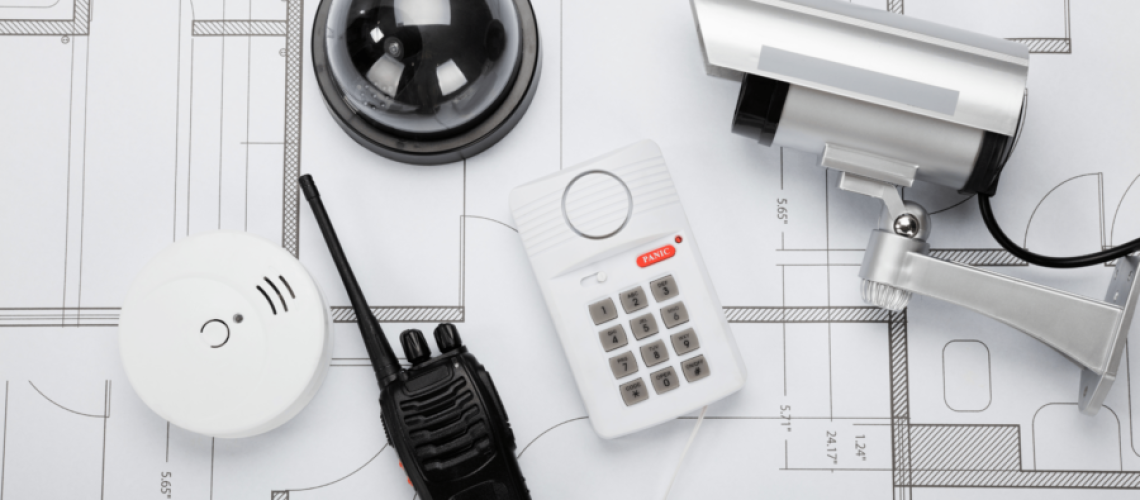There are many measures schools can take to ensure that their students and faculty are as safe as possible. Silent alarms are an essential tool that should be incorporated into every school security system.
Compared to other security measures, silent alarms are not as commonly understood. However, these alarms are not just discrete and convenient. They are an ideal way to protect students and faculty from harm in certain situations. In this article, we’ll discuss the basics of what silent alarms are and how they work. We’ll also highlight an example in which a silent alarm could have saved a teacher from physical injury.
How Do Silent Alarms Work?
In many ways, a silent alarm operates exactly as you might expect it would based on its name. These alarms allow faculty members to alert other staff about a potentially dangerous situation discreetly without further escalating the situation with loud alarms or flashing lights.
Silent alarms come in many forms, some of which are more effective than others. For example, a key feature of the SmartBoot System by LockOut is a tool called Assistance Needed Mode. When someone activates this type of silent alarm, the system will send an electronic alarm message to teachers and administrators throughout the building. This signifies that someone is requesting assistance at their location.
There are many situations in which a silent alarm can be beneficial, including cases of physical abuse, emergency medical situations, disruptive behavior, and more. While other alarm methods can serve the same role in these situations, the next section will reveal the reasons why silent alarms often prove to be advantageous over other alarm systems.
Advantages of Silent Alarms
The primary advantage of a silent alarm is that school staff can alert others in the building of a threatening individual without that person knowing that their behavior has been reported and will soon be addressed. In these scenarios, a silent alarm essentially acts as a secret message system that keeps all school faculty in the know about potential threats.
There are certainly instances in which a conventional alarm that notifies everyone within a building of potential danger is preferable, such as a school break-in or active shooter situation. In these instances, initiating a full-building lockdown would be the appropriate response to ensure that staff and students are aware of the danger and immediately get themselves to safety.
How a Silent Alarm Could Have Prevented a Head Injury
A recent incident in Flint, Michigan, provides an excellent example of when a silent alarm could come in handy. In this story, two high school students engaged in a heated argument in the middle of a classroom.
The argument escalated to the point where one of the students picked up a chair and threw it. The chair struck a teacher in the head, causing them to fall to the ground and sustain a significant head injury. As a result of the incident, the student who threw the chair is now facing felony assault charges.
Eventually, a school resource officer managed to break up the fight, but the damage had already been done. Had the teacher in this story had access to a silent alarm system, there’s a chance that both their head injury and the student’s felony charge could have been avoided.
For example, if the school in this story had set up LockOut’s system and properly trained the faculty how to use it, the teacher could have initiated the Assistance Needed Mode to send an alert message to all the Smart Tablets in the building. This rapid emergency communication system might have been enough to prevent a violent and life-altering classroom altercation.
Building a Complete Security System
Using a silent alarm system can drastically improve the safety of a school. However, no single feature is enough to keep schools as safe as possible. Instead, it is essential for school systems to adopt comprehensive school security systems that include a wide range of safety features.
A complete school security system should include alarms, means to barricade doors and create safe zones, lighting that can respond to specific emergency situations, mapping to help law enforcement in the case of an emergency, and much more. By combining these security measures, schools have a far better chance of preventing violence and maintaining a safe and healthy environment for students and staff.
However, a security system alone is still not enough to keep schools safe and well-prepared for an emergency. Along with a comprehensive security system, it is also necessary to have good training measures in place.
When faculty and students have the training to recognize and respond to potentially dangerous situations, it allows them to use their security systems to the greatest level of effectiveness. Proper training can also reduce the time it takes for students and staff to react to an emergency, which may end up saving lives.
Setting Up Your School with the Best Security System
The reality is that security systems are more necessary than ever for schools. After all, safety is of the utmost importance to parents, teachers, and students.
The issue is that not all companies are equally capable of providing security systems that meet all the modern security needs of a school facility. Fortunately, at LockOut, we provide a state-of-the-art security system that helps keep students and staff safe. We have experience providing our security products to schools, healthcare facilities, government buildings, and facilities in many other industries.
Regardless of your industry and the security concerns it presents, we are ready to develop a comprehensive security system that works perfectly for you. If you are interested in learning more about how LockOut can help your facility become more secure than ever before, please reach out to us.



